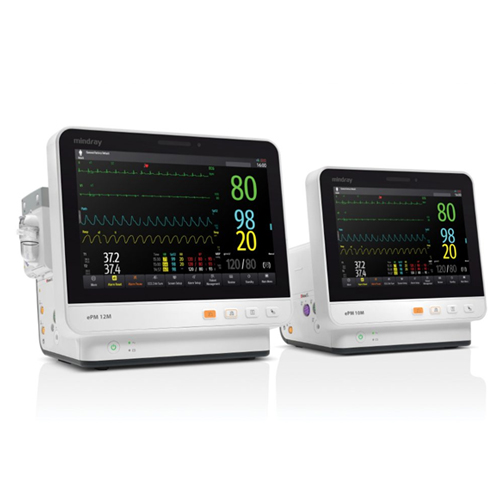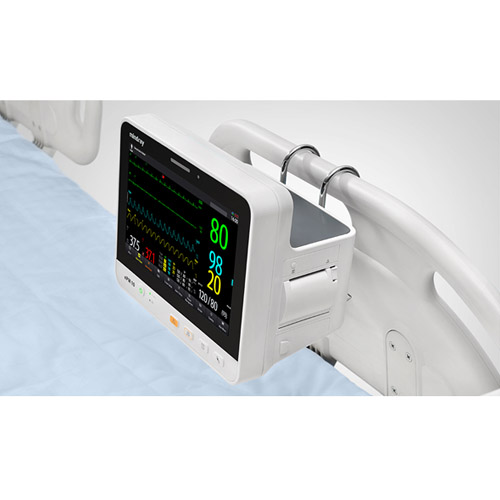

Mindray Mid Acuity Patient Monitor EPM Series
The Mindray ePM Series is the latest(fourth) generation of Mindray’s Mid-acuity monitors. The ePM Series is specially designed for demanding hospital settings, such as emergency rooms, recovery units, sub-acute units and general wards.
The ePM Series features a smartphone-like user experience and allows an efficient workflow for caregivers to access common functions in no more than 2 steps.
Equipped with various Clinical Assistive Applications (CAAs), such as automated Early Warning Scoring (EWS), which helps caregivers identify deteriorating patients quicker and more accurately. Other measurement tools are specially designed for neonates to improve safety in NICU.
Designed specifically to tackle alarm fatigue, the ePM Series features innovative CrozFusion™ technology, which combines and analyses SpO2 pleth waveforms and ECG to help reduce false arrhythmia alarms by 50%, and increase the accuracy of heart rate and pulse rate by 30%*.
With seamless connection to the Central Station or the hospital’s Electronic Medical Record (EMR), the ePM Series allows continuous monitoring at the point of care, be it at the bedside or on the move.
- Simplified operation steps designed for efficient transport
- The high resolution capacitive touchscreen display and intuitive user interface can help caregivers to quickly and accurately complete clinical tasks, keeping their focus on patients during patient transport.
- Accurate, reliable parameter measurement
- The integrated Platinum™ MPM parameters and anti-interference performance ensure excellent parameter accuracy and reliability during patient transport.
- Flexible connectivity capability
- When connected wirelessly to the Mindray central monitoring system, all information from the ePM10 can be viewed from the nurse station or any bedside monitor within the network.



